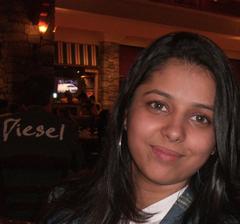Nazneen SaifuddinIn a country like India, where three quarters of the society lives under the poverty line, architects have an obligation to provide shelter. The growing urbanization within India is an undeniable fact today. India is no longer a country of villages. Its cities like Mumbai and Bangalore are rapidly transforming into influential mega-cities of the world. The architects in the cities get paid to fabricate ‘iconic’ images i.e. structure distinct landmarks in the cities. Expensive design competitions are organized in the lust for the ‘largest’, the ‘tallest’, etc. But all that glitters is definitely not gold. These cities have a flip side too; in the race to address superfluous architecture, they fail to tackle the prime issue of housing the poor and the lower middle class that cannot afford the lavish projects being built in the suburbs. In India, many people migrate to the mega-cities, primarily Mumbai, in search for better standards of living, but end up settling in slums lacking even basic sanitation and clean drinking water facilities. However, these shantytowns or cluster housing of tin sheds still house a 40% of Mumbai’s population and eradicating these would render around 600,000 homeless. Therefore an alternative solution needs to be worked out within the existing site that would eliminate the process of shifting the entire population somewhere else. This would be a quick and much more efficient approach to the slums, as the inhabitants could aid in the building of their own community. Hence, the goal of my Social Art of Architecture Design Competition is to combat the existing crisis of the shantytowns within Mumbai through economical construction and performance strategies. This would aid in boosting the “metropolitan” image of the city as a place for everyone and not only the rich and the affluent. This design competition focuses on issues of safety, health and dignity predominantly lacking in Mumbai’s slums. It aims to make a difference and re-foster the lives of the inhabitants of the slums. Furthermore, good designing is inevitable to the slum region as it offsets a challenge to provide sustainable simple living for its inhabitants accommodating all their required amenities within a singular zone, as opposed to the fragmentation visible within the existing slums that have no distinct system of segregation between habitable and non-habitable spaces (garbage disposal, sewage). “Any intelligent fool can make things bigger, more complex, and more violent. It takes a touch of genius – and a lot of courage – to move in the opposite direction.” - Dr. E. F. Schumacher, Founder of Practical Action Hence, the primary focus of this competition is to put forward schemes highlighting simple, minimal shelter strategies within the existing largest slum site i.e. near the Mumbai International Airport through inexpensive innovative design solutions. The aim of this competition is to generate awareness about the current housing dilemma for the poor within the city and the need to recognize selfless architecture rather than selfish architecture. Additional Help and InformationAre you in need of assistance? Please email info@berkeleyprize.org. |
|

